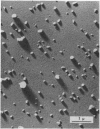Abstract
Liquid impingers, filter papers, and fritted bubblers were partial viable collectors of radioactive submicron T1 bacteriophage aerosols at 30, 55, and 85% relative humidity. Sampler differences for viable collection were due to incomplete physical collection (slippage) and killing of phage by the samplers. Dynamic aerosols of a mass median diameter of 0.2 μ were produced with a Dautrebande generator from concentrated aqueous purified phage suspensions containing extracellular soluble radioactive phosphate as a physical tracer. There was considerable destruction of phage by the Dautrebande generator; phage titers of the Dautrebande suspension decreased exponentially, but there was a progressive (linear) increase in tracer titers. Liquid impingers recovered the most viable phage but allowed considerable (30 to 48%) slippage, which varies inversely with the aerosol relative humidity. Filter papers were virtually complete physical collectors of submicron particles but were the most destructive. Fritted bubbler slippage was more than 80%. With all samplers, phage kill was highest at 85% relative humidity and lowest at 55% relative humidity. An electrostatic precipitator was used to collect aerosol samples for particle sizing with an electron microscope. The particle size was slightly larger at 85% relative humidity than at 30 or 55% relative humidity.
Full text
PDF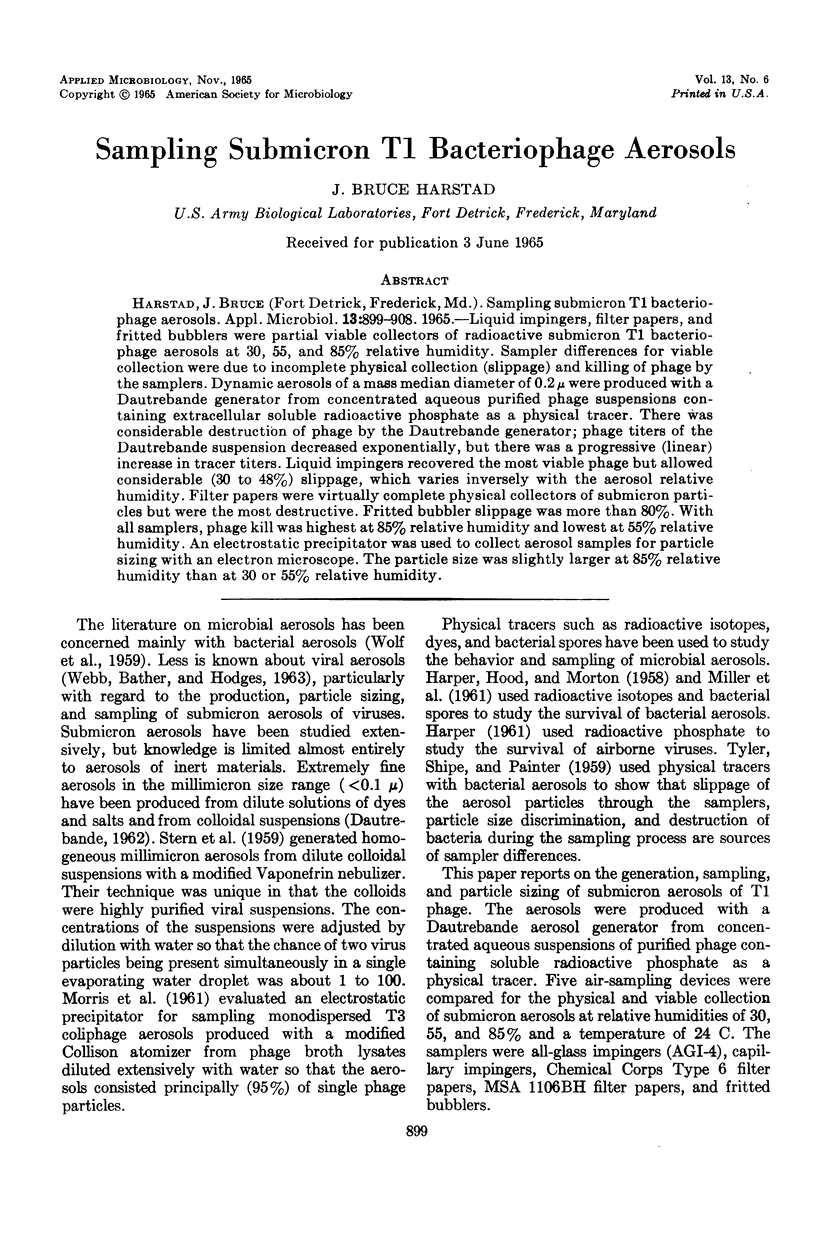
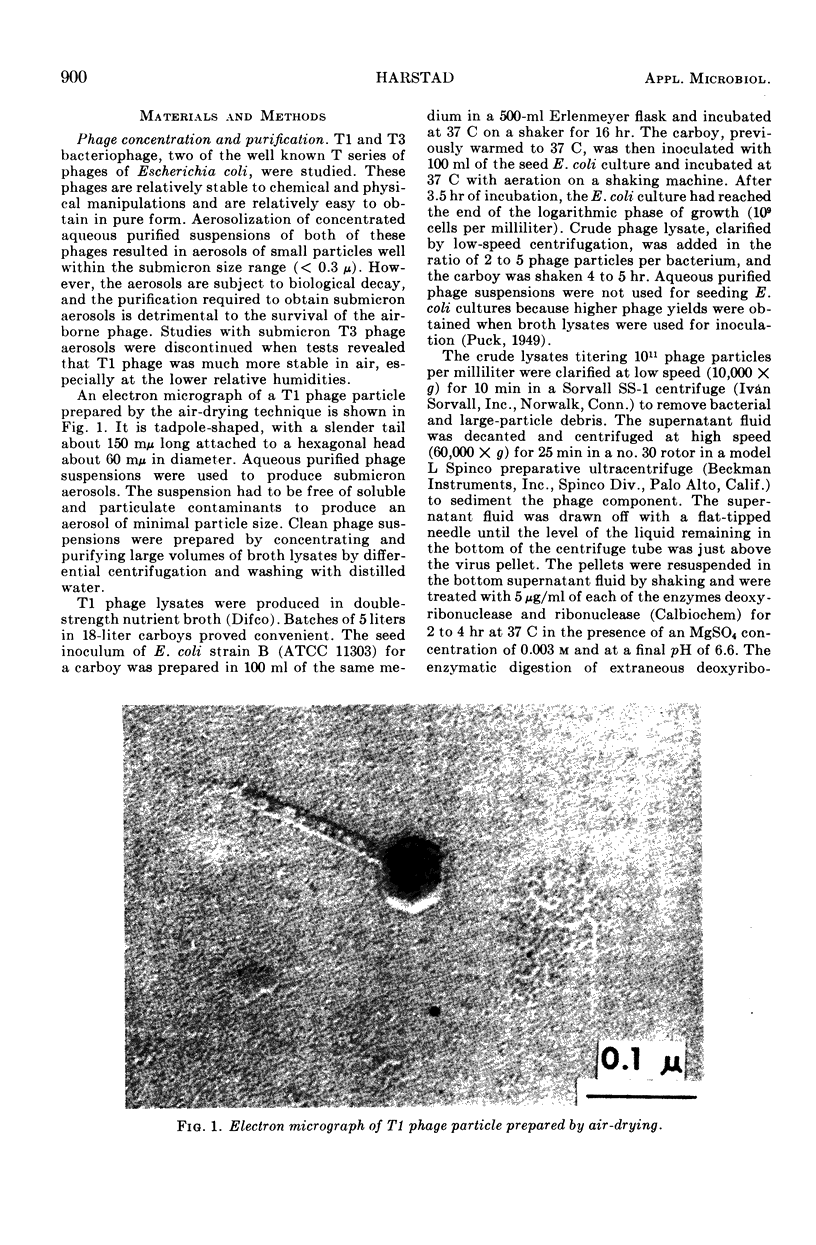
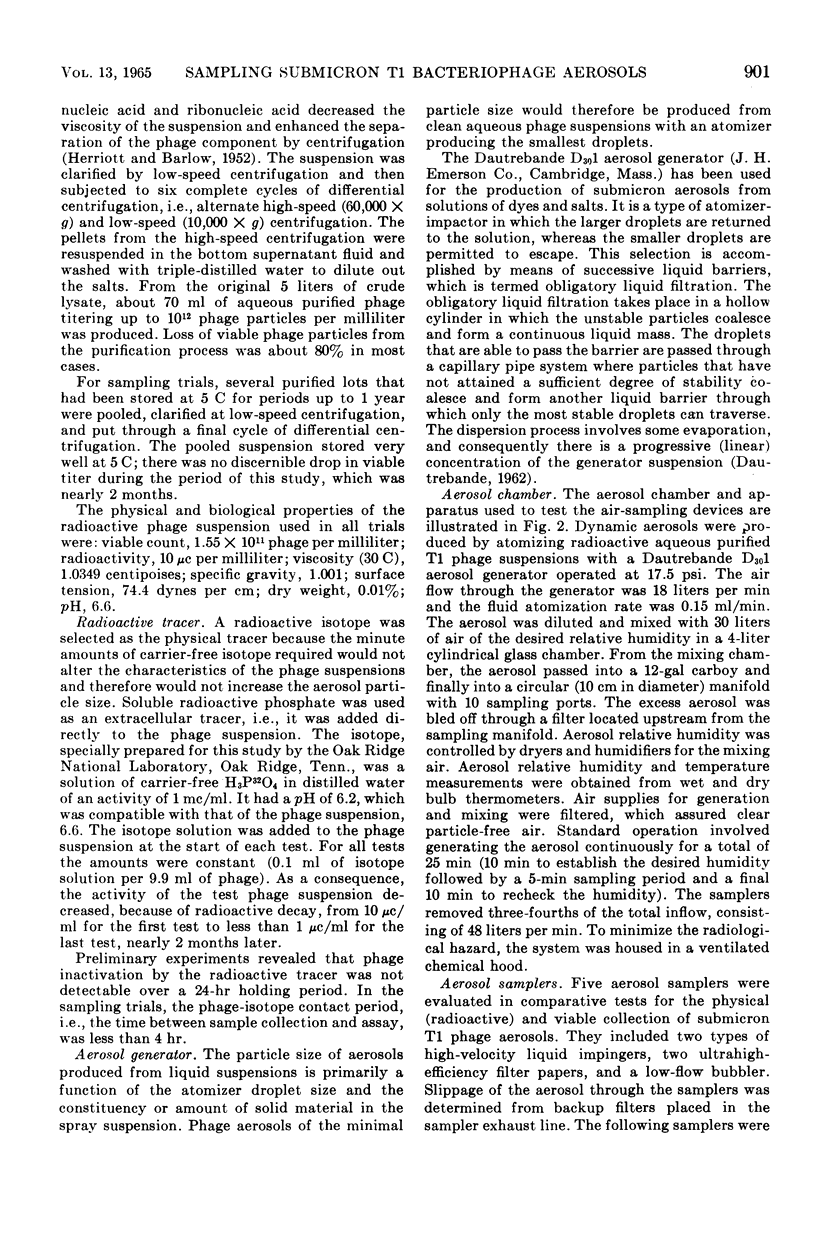
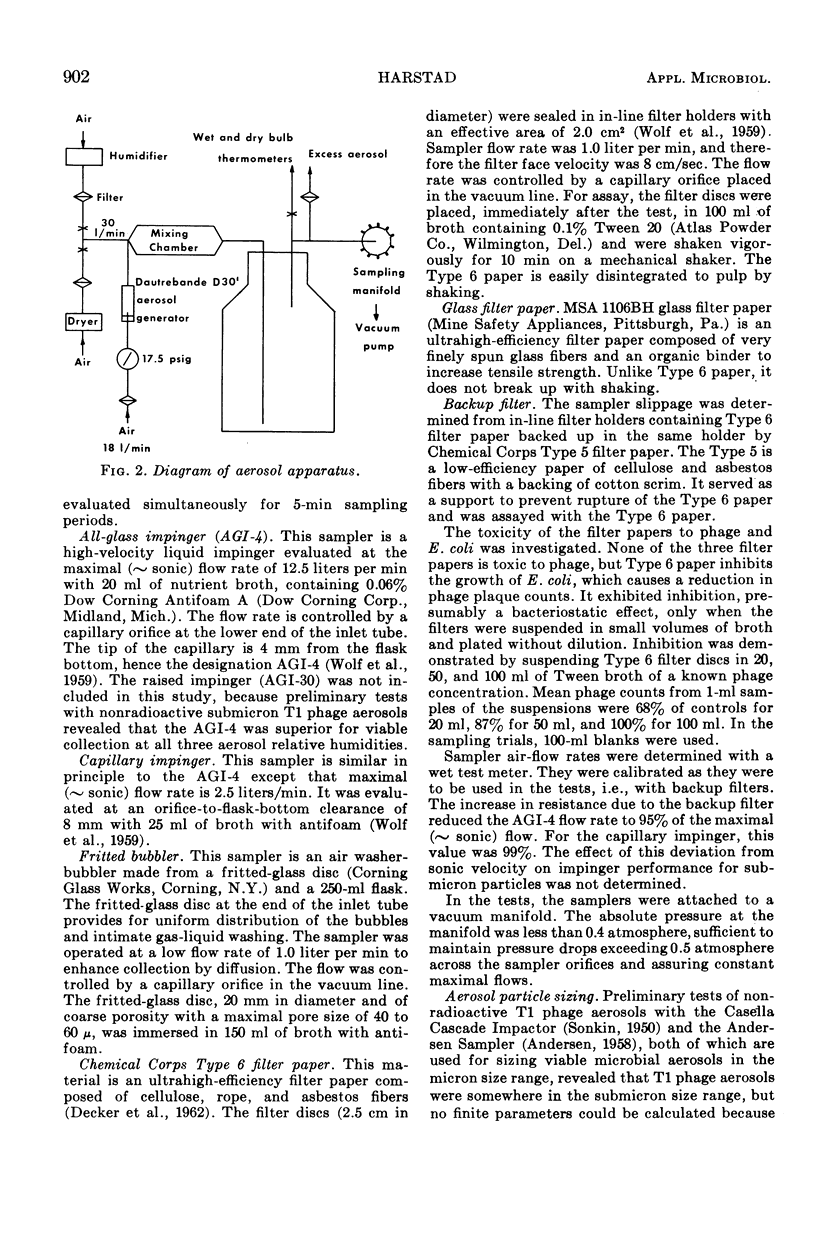
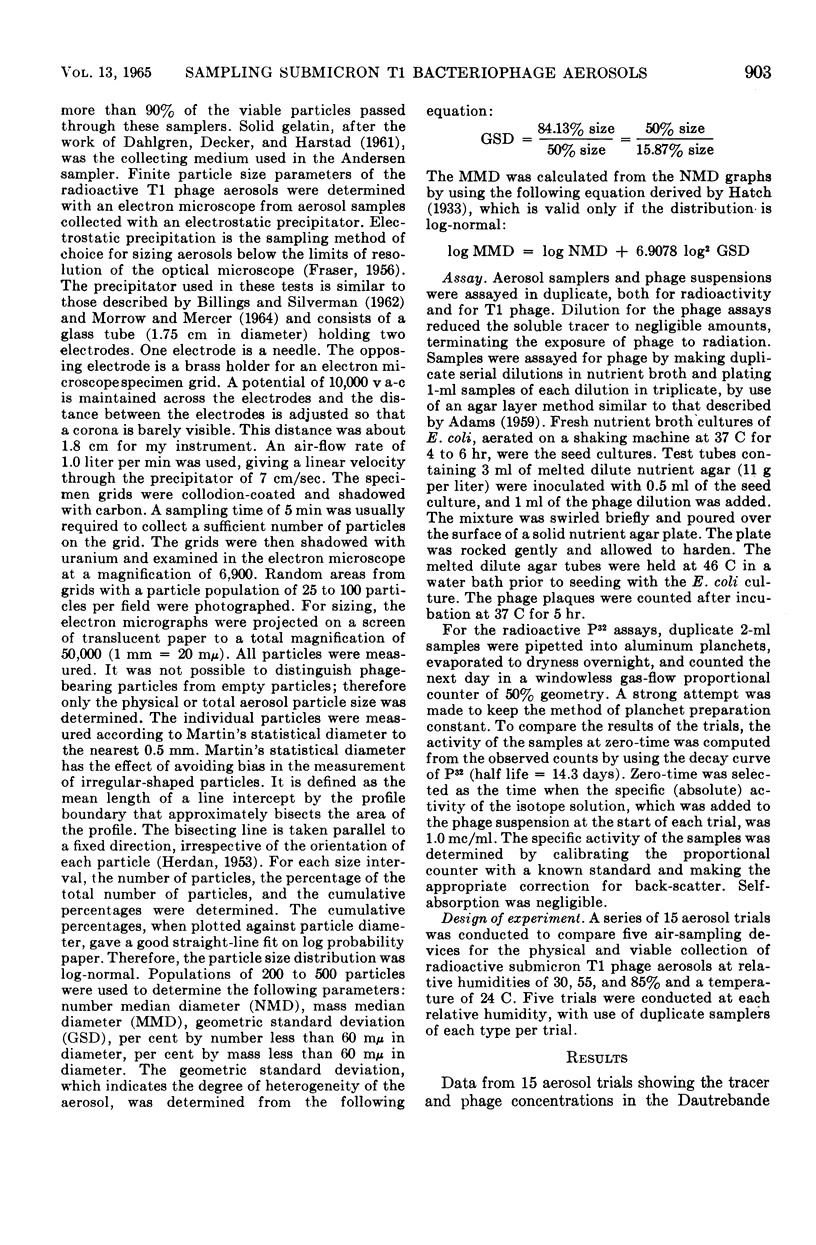
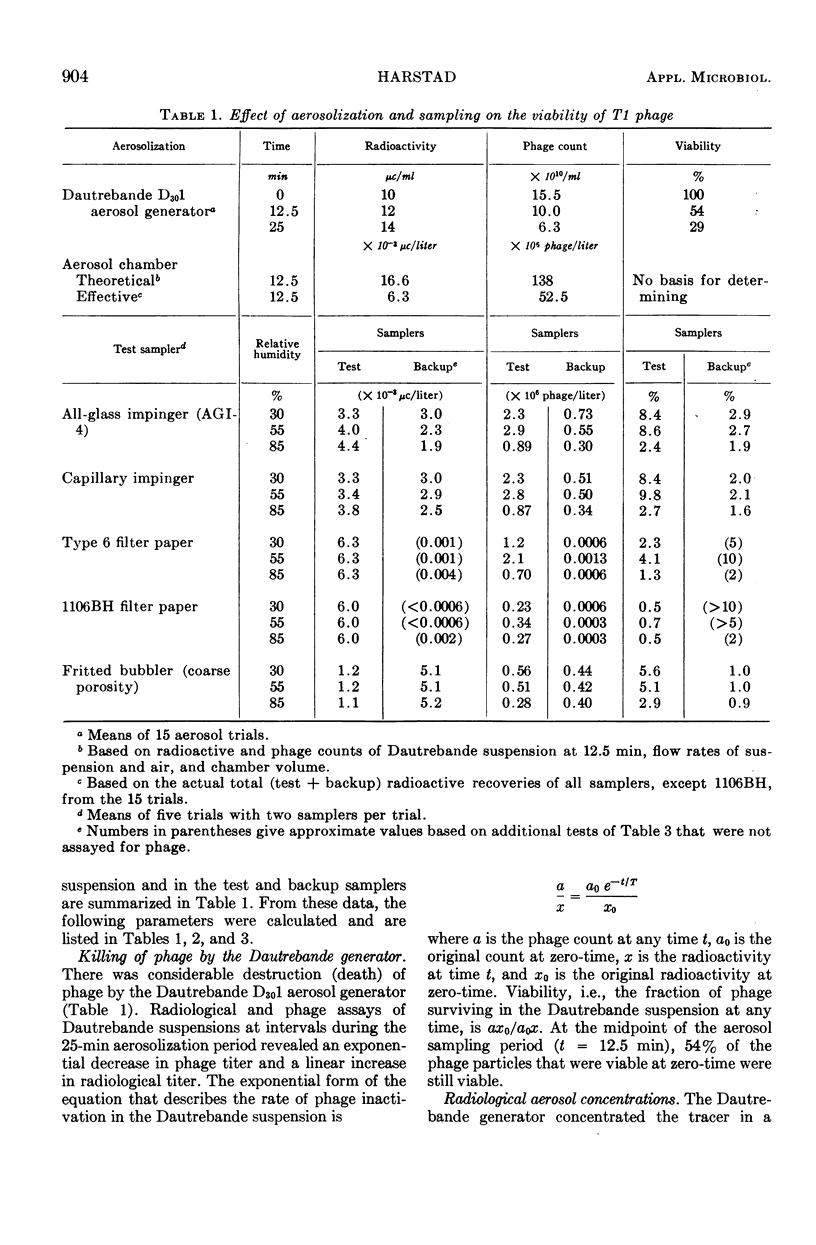
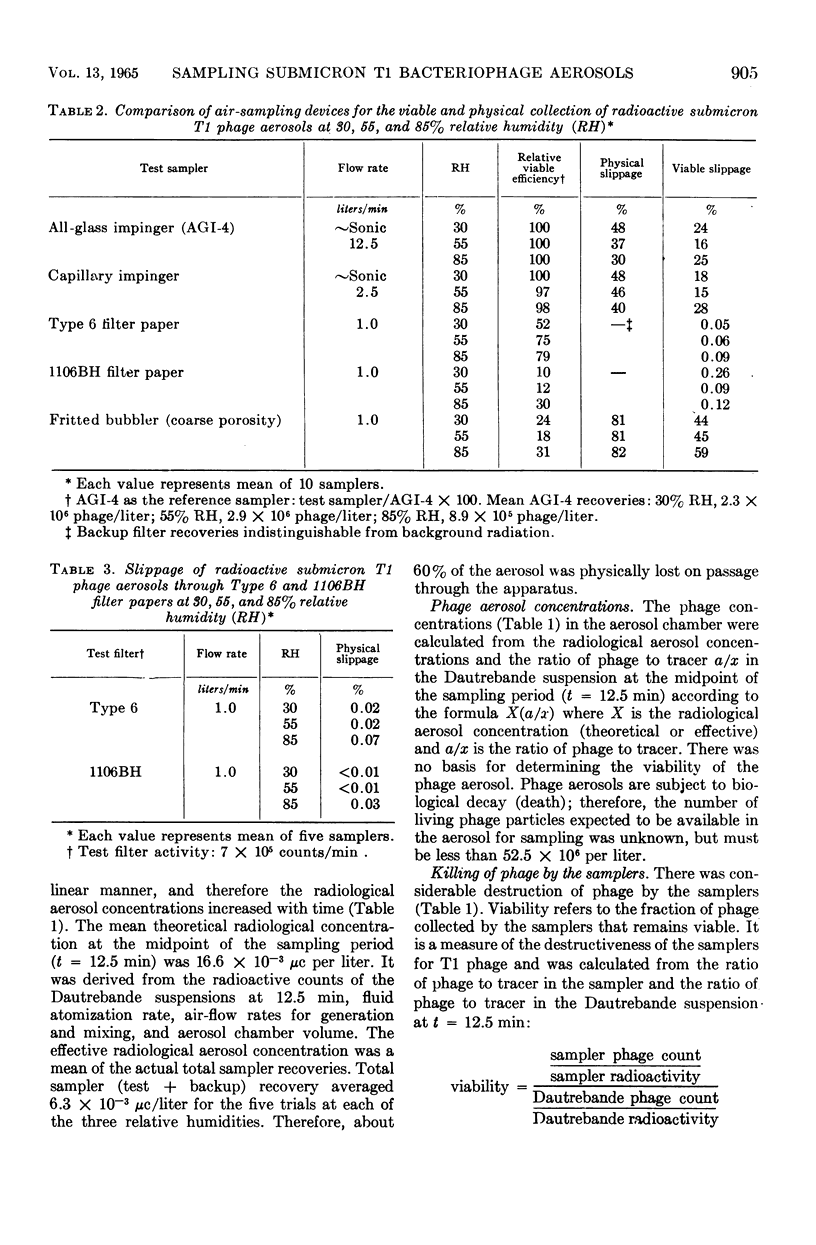
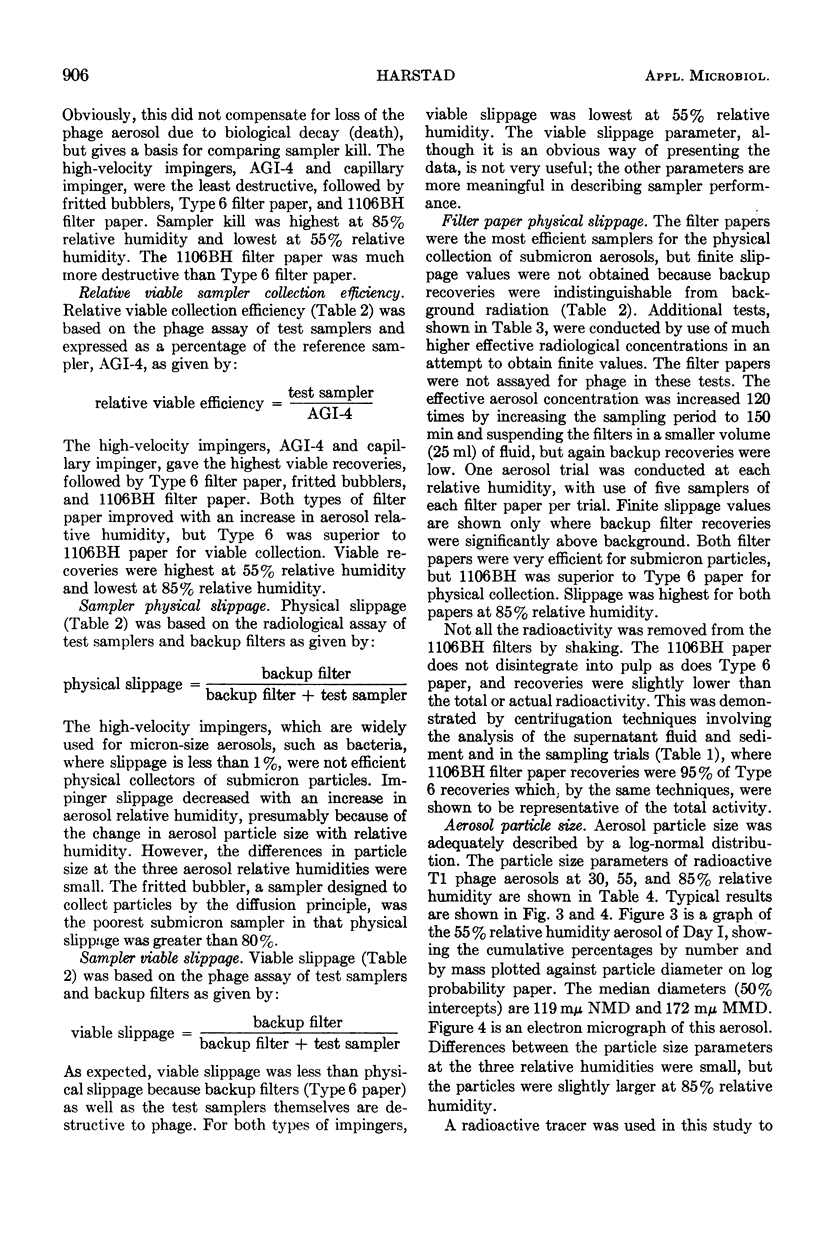
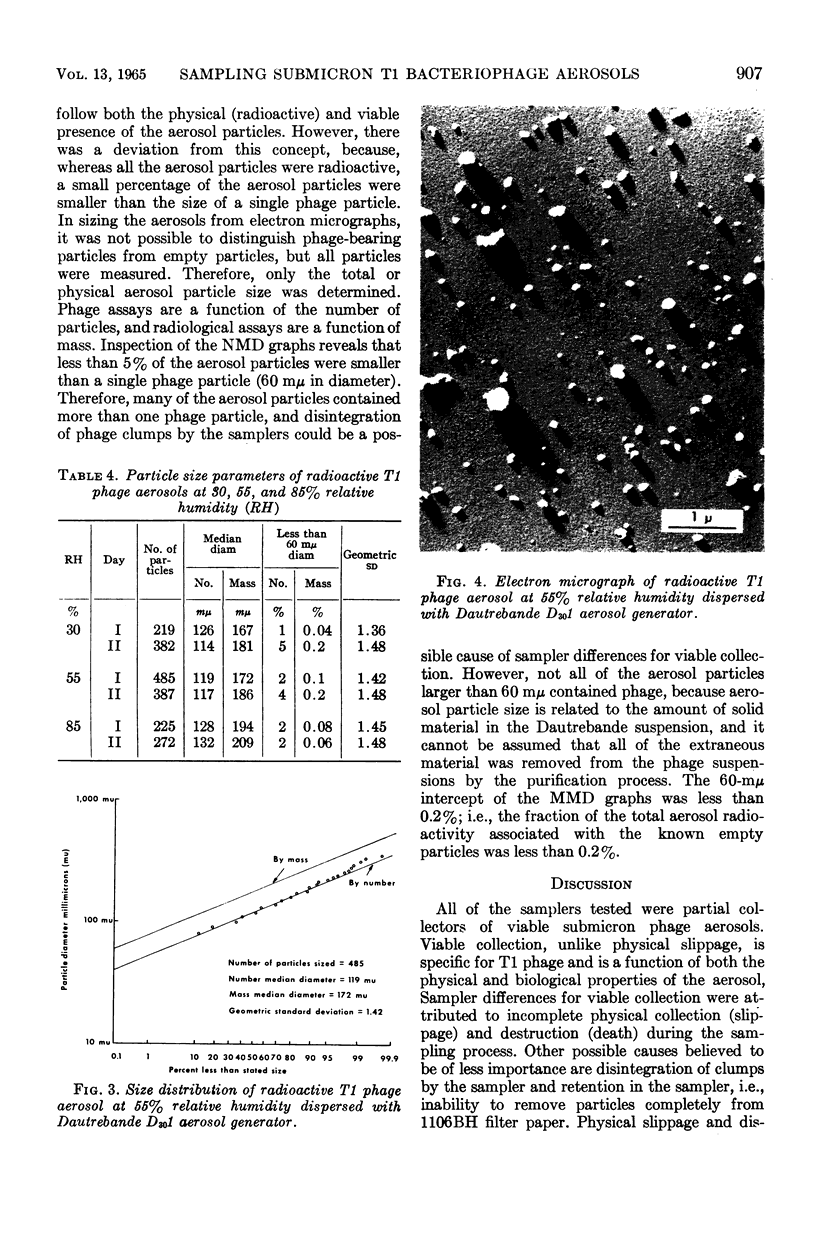
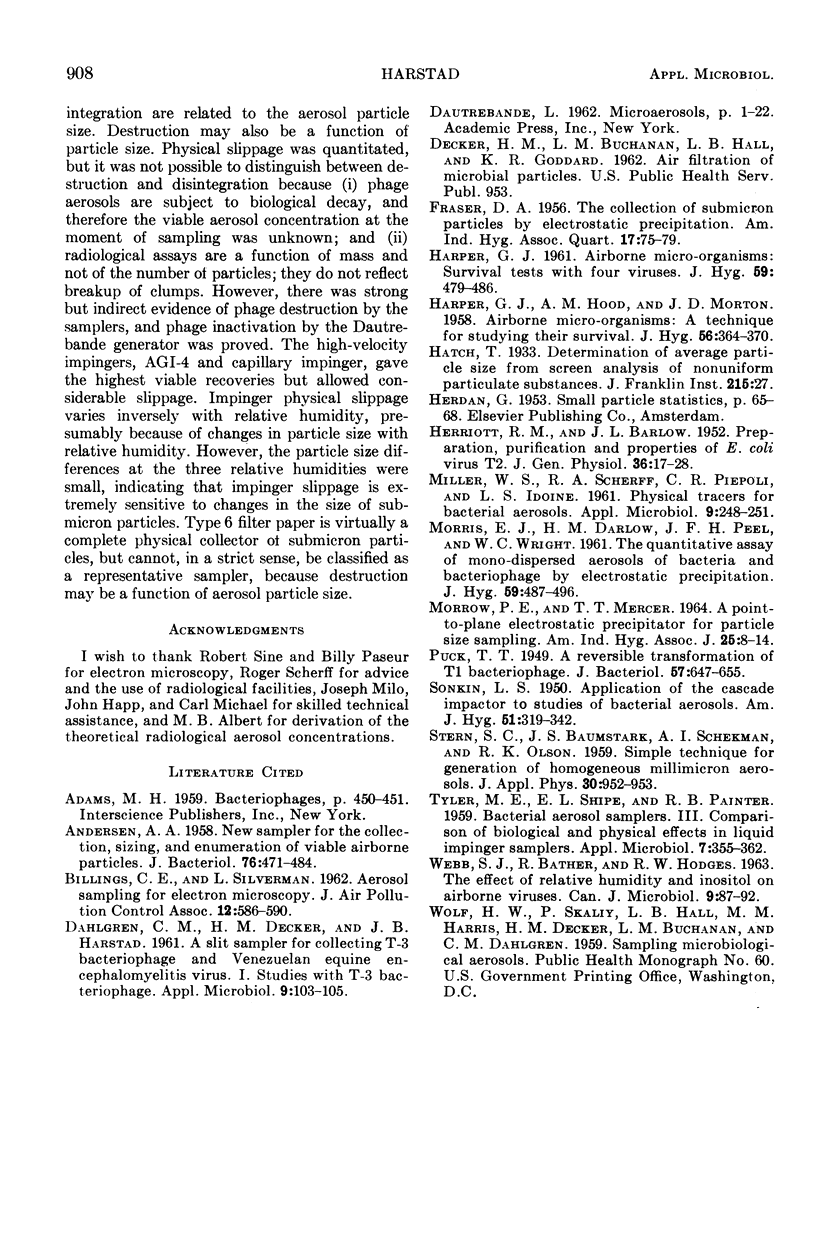
Images in this article
Selected References
These references are in PubMed. This may not be the complete list of references from this article.
- ANDERSEN A. A. New sampler for the collection, sizing, and enumeration of viable airborne particles. J Bacteriol. 1958 Nov;76(5):471–484. doi: 10.1128/jb.76.5.471-484.1958. [DOI] [PMC free article] [PubMed] [Google Scholar]
- DAHLGREN C. M., DECKER H. M., HARSTAD J. B. A slit sampler for collecting T-3 bacteriophage and Venezuelan equine encephalomvelitis virus. I. Studies with T-3 bacteriophage. Appl Microbiol. 1961 Mar;9:103–105. doi: 10.1128/am.9.2.103-105.1961. [DOI] [PMC free article] [PubMed] [Google Scholar]
- FRASER D. A. The collection of submicron particles by electrostatic precipitation. Am Ind Hyg Assoc Q. 1956 Mar;17(1):75–79. doi: 10.1080/00968205609344378. [DOI] [PubMed] [Google Scholar]
- HARPER G. J. Airborne micro-organisms: survival tests with four viruses. J Hyg (Lond) 1961 Dec;59:479–486. doi: 10.1017/s0022172400039176. [DOI] [PMC free article] [PubMed] [Google Scholar]
- HARPER G. J., HOOD A. M., MORTON J. D. Airborne micro-organisms: a technique for studying their survival. J Hyg (Lond) 1958 Sep;56(3):364–370. doi: 10.1017/s0022172400037852. [DOI] [PMC free article] [PubMed] [Google Scholar]
- HERRIOTT R. M., BARLOW J. L. Preparation, purification, and properties of E. coli virus T2. J Gen Physiol. 1952 May;36(1):17–28. doi: 10.1085/jgp.36.1.17. [DOI] [PMC free article] [PubMed] [Google Scholar]
- MILLER W. S., SCHERFF R. A., PIEPOLI C. R., IDOINE L. S. Physical tracers for bacterial aerosols. Appl Microbiol. 1961 May;9:248–251. doi: 10.1128/am.9.3.248-251.1961. [DOI] [PMC free article] [PubMed] [Google Scholar]
- MORRIS E. J., DARLOW H. M., PEEL J. F., WRIGHT W. C. The quantitative assay of mono-dispersed aerosols of bacteria and bacteriophage by electostatic precipitation. J Hyg (Lond) 1961 Dec;59:487–496. doi: 10.1017/s0022172400039188. [DOI] [PMC free article] [PubMed] [Google Scholar]
- MORROW P. E., MERCER T. T. A POINT-TO-PLANE ELECTROSTATIC PRECIPITATOR FOR PARTICLE SIZE SAMPLING. Am Ind Hyg Assoc J. 1964 Jan-Feb;25:8–14. doi: 10.1080/00028896409342547. [DOI] [PubMed] [Google Scholar]
- Puck T. T. A REVERSIBLE TRANSFORMATION OF T1 BACTERIOPHAGE. J Bacteriol. 1949 Jun;57(6):647–655. doi: 10.1128/jb.57.6.647-655.1949. [DOI] [PMC free article] [PubMed] [Google Scholar]
- SONKIN L. S. Application of the cascade impactor to studies of bacterial aerosols. Am J Hyg. 1950 May;51(3):319–342. doi: 10.1093/oxfordjournals.aje.a119398. [DOI] [PubMed] [Google Scholar]
- TYLER M. E., SHIPE E. L., PAINTER R. B. Bacterial aerosol samplers. III. Comparison of biological and physical effects in liquid impinger samplers. Appl Microbiol. 1959 Nov;7:355–362. doi: 10.1128/am.7.6.355-362.1959. [DOI] [PMC free article] [PubMed] [Google Scholar]




